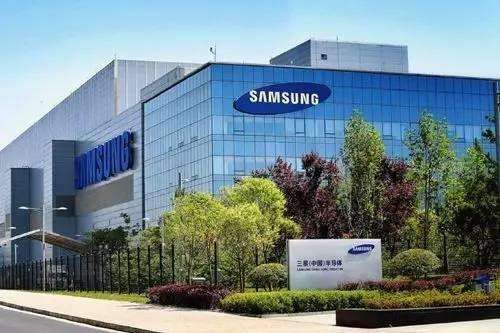OLABS ∨
解决方案 ∨

三星已经应用其人工智能(AI)算法来辅助进行各种成像模式的诊断。
2018年11月25日,医学成像技术领军企业三星电子在芝加哥麦考密克会议中心(McCormick Place)举行的2018年北美放射学会年会(RSNA)上展示了该公司在诸多方面取得的最新科研成果,包括超声波、数字射线照相、计算机断层扫描(CT)、磁共振成像(MRI)概念及其软件创新。
“值得高兴的是,三星的AI技术已经成功应用于现有的诊断成像设备,并在市场上受到好评,”三星电子健康与医疗设备公司总裁兼三星麦迪逊首席执行官全东守(Dong-soo Jun)表示。“作为综合诊断成像技术提供商,我们将通过与医院和医护人员的合作,进一步改进技术。我们的目标是将放射科医师与人工智能结合起来,填补医疗健康管理空缺。”
在会上,三星展示了几种基于AI技术的诊断成像软件:
超声系统 —— S-Detect™ for Breast是一款基于人工智能的软件,通过超声图像对乳腺病变进行分析,并已应用于三星的超声系统,这类超声系统专用于放射科。结合《乳腺影像报告和数据系统图谱》(BIRADS® ATLAS*),S-Detect™ for Breast可以提供标准化的可疑乳房病变报告和分类说明。意大利巴勒莫大学放射学教授Tommaso Bartolotta最近发表的一项研究[1]表明,S-Detect™ for Breast有助于不同程度地改善对乳房病变的综合诊断。通过使用S-Detect™ for Breast,只有四年甚至更少经验的医生的诊断准确率从0.83提高到了0.87(曲线下面积)。S-Detect™ for Breast对于并非乳房成像专家的医师们来说非常有用,可以为其提供乳房诊断方面的支持和指导(在美国,只有形状和方向描述子会自动分类)。
数字射线照相术 —— 通过利用人工智能技术,“骨抑制”功能可以减少胸部X光片中的骨骼信号,清楚显示出被骨骼遮挡的肺组织。此外,三星还介绍了另一种解决方案,即SimGrid™,用于简化替换网格的工作流程,同时提供散射伪影更低的高图像质量。根据最近发表的一项研究[2],“SimGrid™”所提供的图像质量几乎可以与使用物理网格拍摄的图像相媲美。此外,还有一款叫做Auto Lung Nodule Detection(肺结节自动检测,ALND)的AI软件能够更清楚地检测肺结节。该软件是一种基于肺结节检测AI技术的CAD(计算机辅助检测)软件,正在等待510(k)审核认证。根据《胸部成像杂志》(Journal of Thoracic Imaging)一项最新研究[3],与6名胸部放射科医师的平均水平相比,ALND软件将胸部X光片中3cm或更小的肺癌结节的检测灵敏度提高了7个百分点,达到92%。
计算机断层扫描 —— 三星公司还推出了颅内出血一揽子解决方案,将移动卒中单元与基于AI技术的放射计算机辅助分诊和通知解决方案结合起来。
磁共振成像 —— 通过利用人工智能技术,三星正在研发一种可以显示膝关节软骨厚度以及膝关节炎患者的图像等信息的先进技术。该软件作为原型,不会在世界上的任何地区出售。
在三星展台,与会者可看到一个单独的“人工智能区域”,参观者可以更加便捷地体验三星的AI技术。三星还将主办一次研讨会,展示其图像处理技术是如何提高诊断准确性,并提高儿科患者的辐射安全的。
通过发布借助各种基于人工智能技术的大数据的新诊断工具,三星将继续为提高医护人员的诊断准确性提供支持。
[1] Tommaso Vincenzo Bartolotta, et al.Focal breast lesion characterization according to the BI-RADS US lexicon: role of acomputer-aided decision-making support.La radiologia medica.2018 Mar 22
[2] S. Y. Ahn, et al.The Potential Role of Grid-Like Software in Bedside Chest Radiography in Improving Image Quality and Dose Reduction:An Observer Preference Study.Korean J Radiol, 2018; 19(3):526-533
[3] M.J.Cha, et al.Performance of Deep Learning Model in Detecting Operable Lung Cancer with Chest Radiographs.J Thorac Imaging, 2018 In press
Samsung Brings Together Medical Imaging and AI for Radiologists at RSNA 2018
Samsung has applied its AI algorithms to assist diagnosisin each of its imaging modalities.
CHICAGO, Nov. 25, 2018 /PRNewswire/ -- Samsung Electronics, a leader in medical imaging technology, is showcasing its latest Ultrasound, Digital Radiography, Computed Tomography (CT), Magnetic Resonance Imaging (MRI) concept and their software innovations at the Radiological Society of North America (RSNA) 2018 Annual Meeting at McCormick Place in Chicago.
"We are pleased that Samsung's AI technologies have been successfully applied to the existing diagnostic imaging devices and havebeen well received in the market," said Dongsoo Jun, President of Health & Medical Equipment Business at Samsung Electronics and CEO of Samsung Medison. "As a comprehensive diagnostic imaging solution provider, we will continue to strengthen our technologies through collaboration with hospitals and healthcare professionals. We aim to bring together radiologists and AI to fill in the gaps for improved healthcare management."
Samsung showcases several types of AI based diagnostic imaging software:
Ultrasound System -- S-Detect™ for Breast is AI based software which analyzes breast lesions using ultrasound images, and has been implemented into Samsung's ultrasound systems dedicated to Radiology. It assists in standardizing reports and classification of suspicious breast lesions by incorporating BIRADS® ATLAS* (Breast Imaging-Reporting and Data System, Atlas) According to a recently published study[1] by radiology professor Tommaso Bartolotta from the University of Palermo in Italy, S-Detect™ for Breast has shown to assist various degrees of improvement in the overall diagnosis of breast lesions. When using S-Detect™ for Breast, the diagnostic accuracy for doctors with experience of four years or less improved from 0.83 to 0.87 (AUC, Area Under Curve). S-Detect™ for Breast could be a useful tool for supporting and guiding breast diagnosis among non-expert breast imaging physicians (Only shape and orientation descriptors are automatically classified in the United States).
Digital Radiography -- By using AI technology, the 'Bone Suppression' function, which reduces the bone signal from the chest x-ray image, clearly brings out the lung tissues obscured by the bones. 'SimGrid™' has also been introduced as a solution to ease the workflow to replace grids, while providing excellent image quality with reduced scatter artifacts. According to a recently published study[2], 'SimGrid™' provided image quality almost as good as the images taken with a physical grid. The Auto Lung Nodule Detection (ALND) is a CAD (Computer Aided Detection) solution based on AI technology used in the detection of lung nodules and is 510(k) pending. According to a recent study[3] in press in Journal of Thoracic Imaging, ALND improved the detection sensitivity of lung cancer nodules 3 cm or smaller in chest radiographs by seven percentage points to 92 percent, compared with the average of six chest radiologists.
Computed Tomography -- Samsung has introduced the intra-cranial hemorrhage package that combines a mobile stroke unit with a radiological computer aided triage and notification solution based on AI technology.
Magnetic Resonance Imaging -- Utilizing AI technology, Samsung is developing a technology to display information such as knee cartilage thickness as well as images of knee arthritis patients. The software is a prototype and not for sale in any region of the world.
At the Samsung booth, attendees will find a separate 'AIzone' that allows visitors to experience Samsung's AI technology more easily. Samsung will also host a symposium that will demonstrate how its image processing technology improves diagnostic accuracy and promote radiation safety for pediatric patients.
Through the release of new diagnostic tools that utilize diverse data based on AI technology, Samsung will continue to support healthcare professionals to improve the diagnostic accuracy.
[1] Tommaso Vincenzo Bartolotta, et al. Focal breast lesion characterization according to the BI-RADS US lexicon: role of acomputer-aided decision-making support. La radiologia medica. 2018 Mar 22
[2] S. Y. Ahn, et al. The Potential Role of Grid-Like Software in Bedside Chest Radiography in Improving Image Quality and Dose Reduction: An Observer Preference Study. Korean J Radiol, 2018; 19(3):526-533
[3] M.J. Cha, et al. Performance of Deep Learning Model in Detecting Operable Lung Cancer with Chest Radiographs. J Thorac Imaging, 2018In press
内容来自:PR Newswire
整理翻译:奥咨达
如果你有寻找医疗器械孵化,
那就与我们取得联系吧!
您可以填写右边的表格,让我们了解您的服务需求,这是一个良好的开始,我们将会尽快与你取得联系。当然也欢迎您给我们写信或是打电话,让我们听到你的声音!
24小时免费咨询热线:
400-6768632
您想参观OLABS创新工厂,
那就与我们取得联系吧!
您可以填写右边的表格,让我们了解您的服务需求,这是一个良好的开始,我们将会尽快与你取得联系。当然也欢迎您给我们写信或是打电话,让我们听到你的声音!
24小时免费咨询热线:
400-6768632